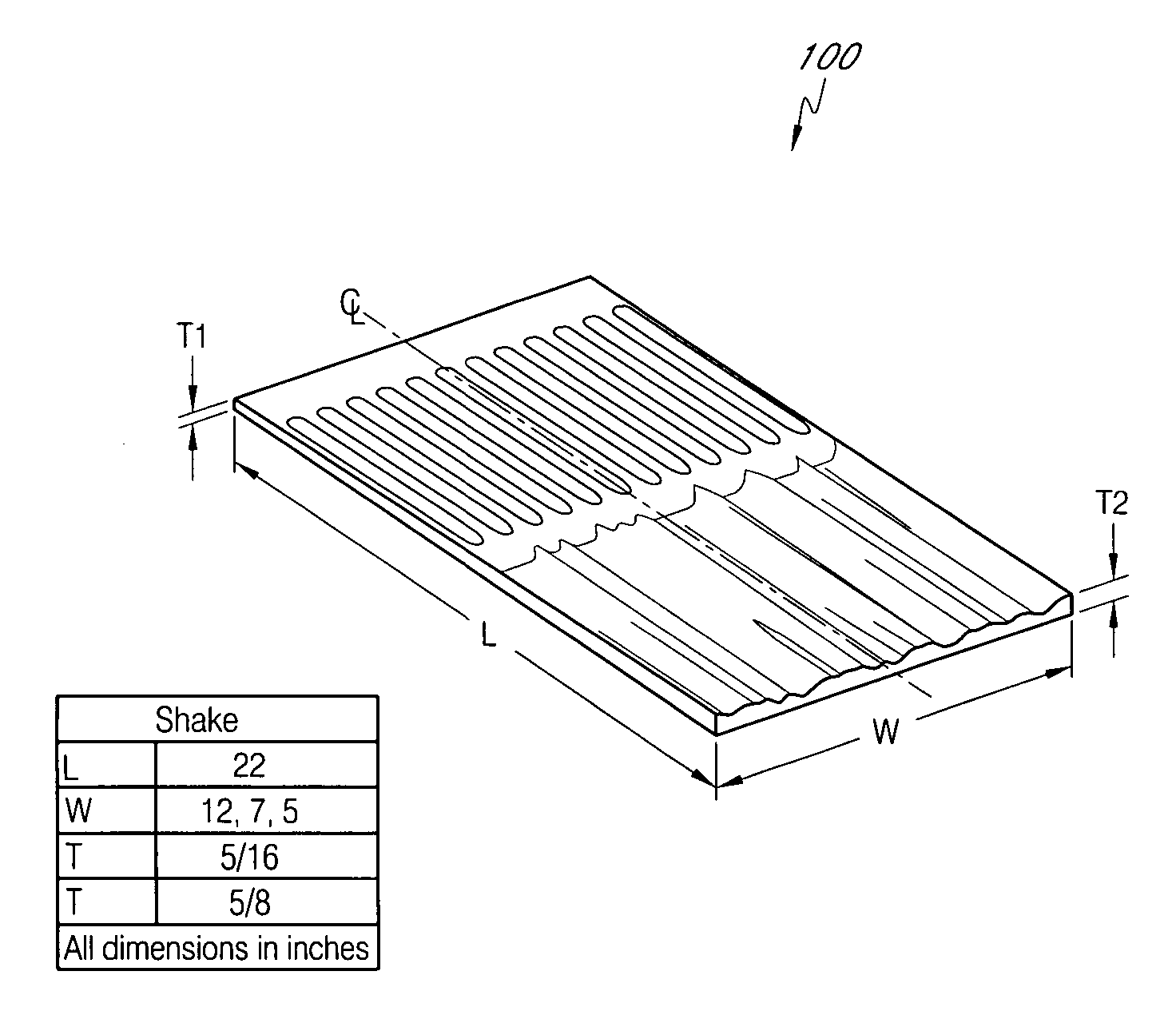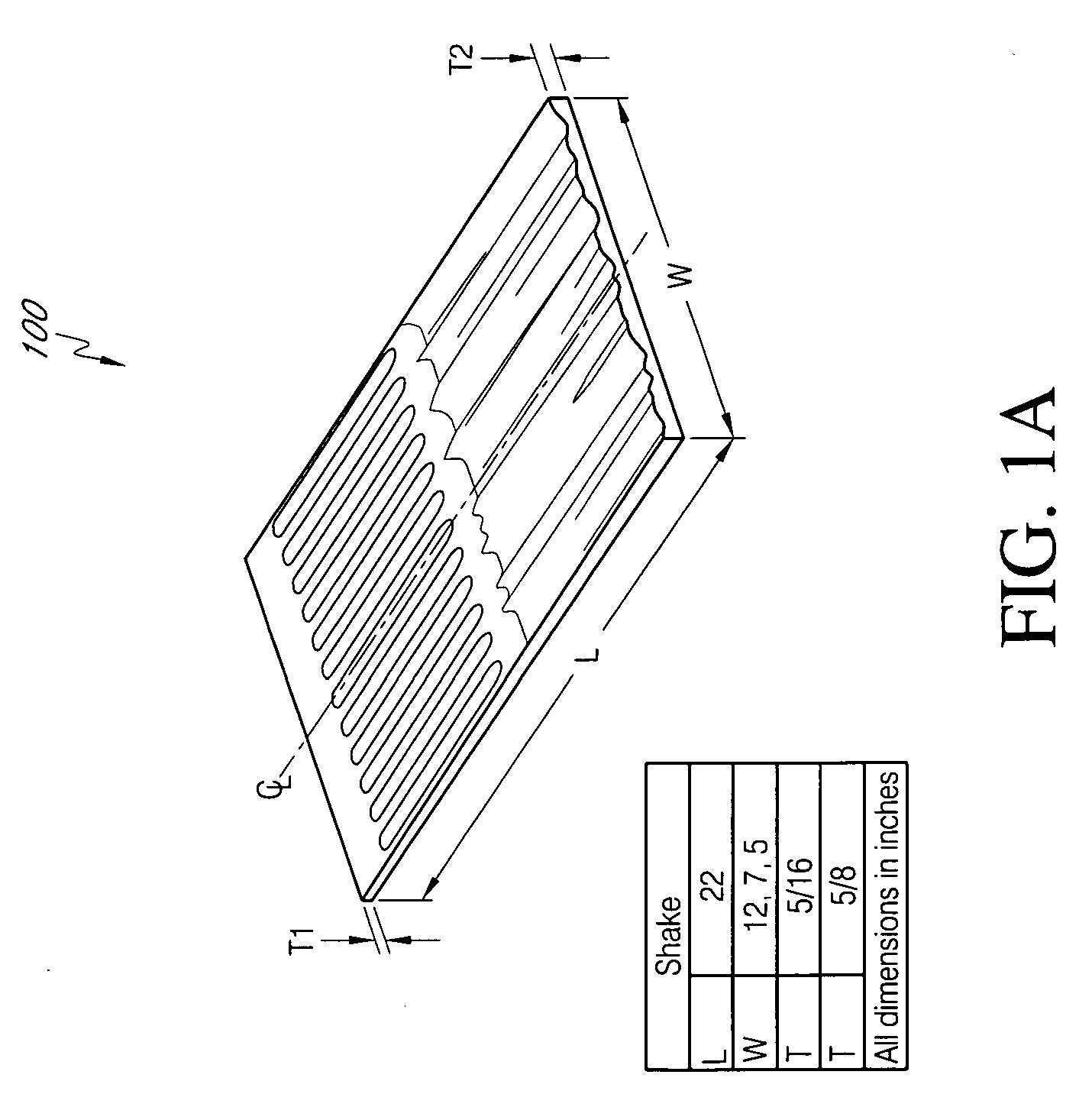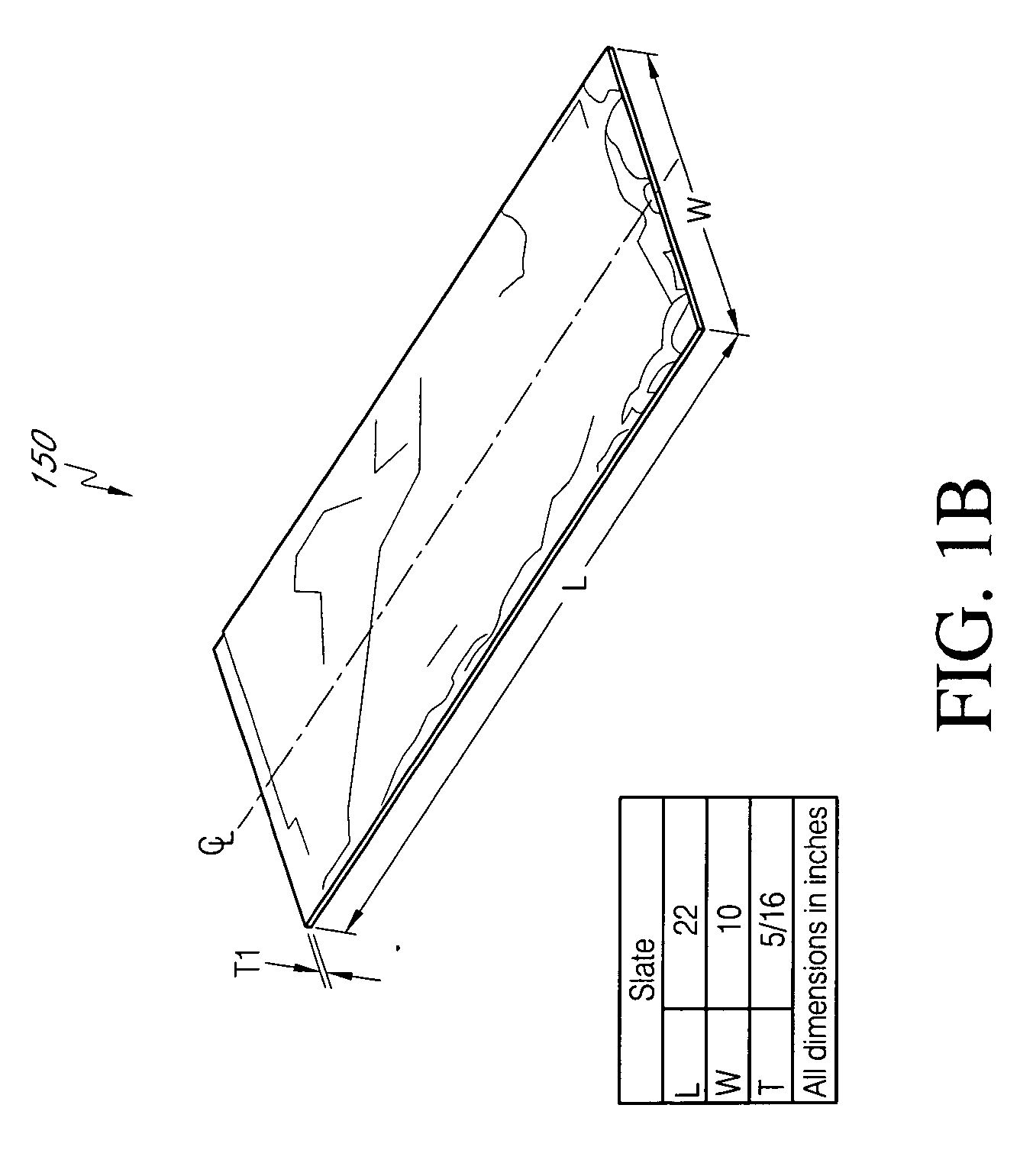Durable building article and method of making same
a fiber cement and building article technology, applied in the field of durable and nailable fiber cement articles, can solve the problems of difficult nailing, shape and installation of slate roofing materials, and high cost of quarrying,
- Summary
- Abstract
- Description
- Claims
- Application Information
AI Technical Summary
Benefits of technology
Problems solved by technology
Method used
Image
Examples
example 1
[0058] In this example, roofing articles were formed using the above method 200 from a paste compounded according to the formulation shown below.
about 30.9%Binder(Type II Portland Cement)about 30.9%Aggregate(200 mesh ground silica)about 0.4%Long fiber(5 denier × 15 mm polypropylene fiber)about 5%Short fiber(Bleached pulp)about 25%Low Density(Bottom ash, screened to Additiveabout 0.75%Hydrophobe(Zinc Stearate)about 0.8%VEA(Walocel ® Hydroxyethylmethylcellulose)about 0.35%Red pigment(Red iron oxide)about 1%Black pigment(Carbon Black)about 5%Filler(Calcium carbonate - 20 micron)
[0059] The article was hardened by exposing it for approximately 3.5 hours at about 140° F. and about 40% RH, and then for about 6.5 hours at about 113° F. and about 20% RH using a standard commercially available, electronically controlled climate chamber.
example 2
[0060] In this example, roofing articles were formed using the above method 200 from a paste compounded according to the formulation shown below:
about 40.35%Binder(Type II Portland Cement)about 40.35%Aggregate(200 mesh ground silica)about 0.4%Long fiber(5 denier × 15 mm polypropylenefiber)about 5%Short fiber(Bleached pulp)about 5%Low Density(lightweight fly ash)Additiveabout 0.75%Hydrophobe(Zinc Stearate)about 0.8%VEA(Hydroxyethylmethylcellulose)about 0.35%Red pigment(Red iron oxide)about 1%Black pigment(Carbon Black)about 5%Filler(Calcium carbonate - 20 micron)
[0061]
TABLE 2Mechanical PropertiesProperty (units)Example 1Example 2Modulus of Rupture3.84.2MoR (MPa)Modulus of Elasticity2.51.8MoE - (GPa)MoR / MoE ratio1.522.33Oven Dry Density1.1751.15Z direction tensile -0.750.75ZDT (MPa)ZDT after 80 freeze1.481.48thaw cycles (MPa)% ZDT retention197%197
[0062] Table 2 summarizes the mechanical properties of one embodiment of the roofing article formed with the formulation shown in Example ...
PUM
| Property | Measurement | Unit |
|---|---|---|
| density | aaaaa | aaaaa |
| aspect ratio | aaaaa | aaaaa |
| angle | aaaaa | aaaaa |
Abstract
Description
Claims
Application Information
 Login to View More
Login to View More - R&D
- Intellectual Property
- Life Sciences
- Materials
- Tech Scout
- Unparalleled Data Quality
- Higher Quality Content
- 60% Fewer Hallucinations
Browse by: Latest US Patents, China's latest patents, Technical Efficacy Thesaurus, Application Domain, Technology Topic, Popular Technical Reports.
© 2025 PatSnap. All rights reserved.Legal|Privacy policy|Modern Slavery Act Transparency Statement|Sitemap|About US| Contact US: help@patsnap.com



